(374) Akeno Sunflower Festival
文字数 4,108文字
The “Akeno Sunflower Festival(あけのひまわりフェスティバル)” was held for nine days from Aug. 26th to Sep. 3rd at a field near Miyayama Furusato Fureai Park (宮山ふるさと ふれあい公園) in Chikusei City. We visited there to see the sunflower field on the day before the opening of the event, avoiding the crowds.
In 2005, Akeno-machi merged with Shimodate City, Sekijo-machi, and Kyowa-machi to form Chikusei City (筑西市). "Akeno" is the old town name.
In 1990, the Takatsu district was used to cultivate a single field of "large sunflowers." Since 1993, Yae Himawari (whose official name is Tohoku Yae Himawari, Helianthus annuus cv. tohoku yae) have been cultivated here.
They are filled with narrow petals in the center and lack the central brown part. For this reason, seeds cannot be harvested from the central brown part. The seeding method is a trade secret. In 2002, the venue moved to the Miyayama area.
The Akeno Sunflower Festival is held in late August, later than other sunflower festivals. This is because the fields that have finished harvesting wheat from the middle to the end of June are borrowed from landowners and sown with sunflower seeds.
A stage is set up at the edge of the sunflower field. I’ll tell you about the mascot character of Chikusei City that you can see in the back of this stage.
"Chikkun", the mascot of Chikusei City, wears a hat which represents Mt. Tsukuba and Chikusei City. His hat has Chikusei’s products, a "pear" and a "strawberry", and Chikusei's flower "cosmos". Chikkun's body is made of a small watermelon, (which is also a local product), and he wears a sunflower pochette.
There are several friends of Chikusei:
1 "Diamond" and "Tsukuba-san" (Diamond Tsukuba),
2 "Chigochi" and "Chigopi" (strawberries)
3 "Nashibo” (a pear)
4 "Sharimaru" and "Kodamaru" (small watermelons)
5 “Tetsuo” (steam locomotive)
6 “Sunfurawan” (sunflower)
7 “Miko Nyan” (Mikoshi or portable shrine),
8 “Umami Bird” (Shimodate Ramen)
These “Chikusei Friends” were made by the creator, Yabai-chan, who is widely known for her 4-panel manga "Oshushidaya" and has a “world view of not trying hard (脱力系の世界観)”.
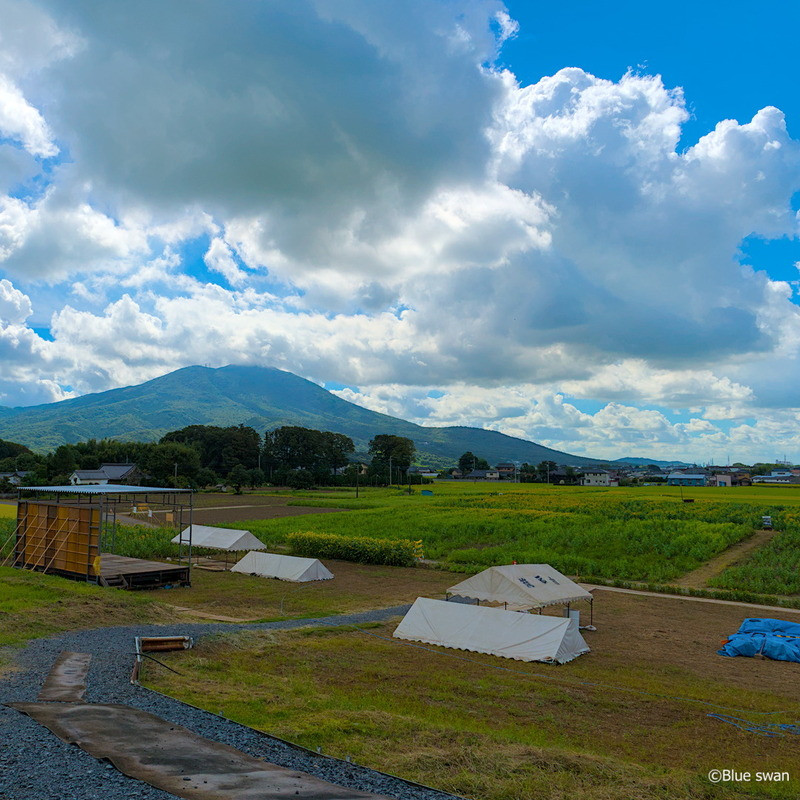
①This is the venue for the Sunflower Festival in the morning. You can see the stage on the left and the road to the sunflower field on the right. At the end of the road, you can see a box.
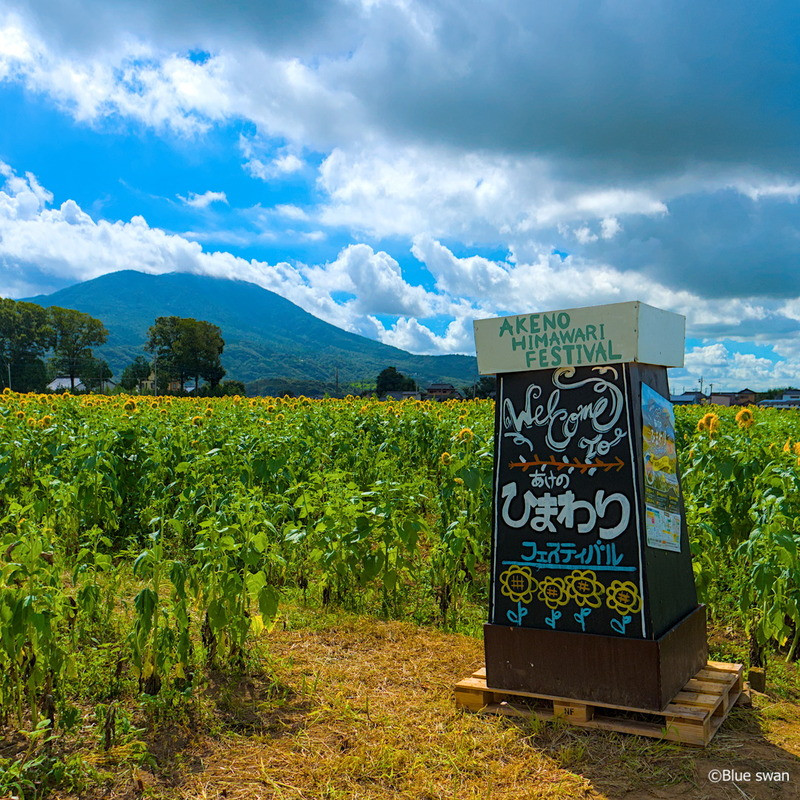
② This is the box-shaped thing seen in the picture ①.
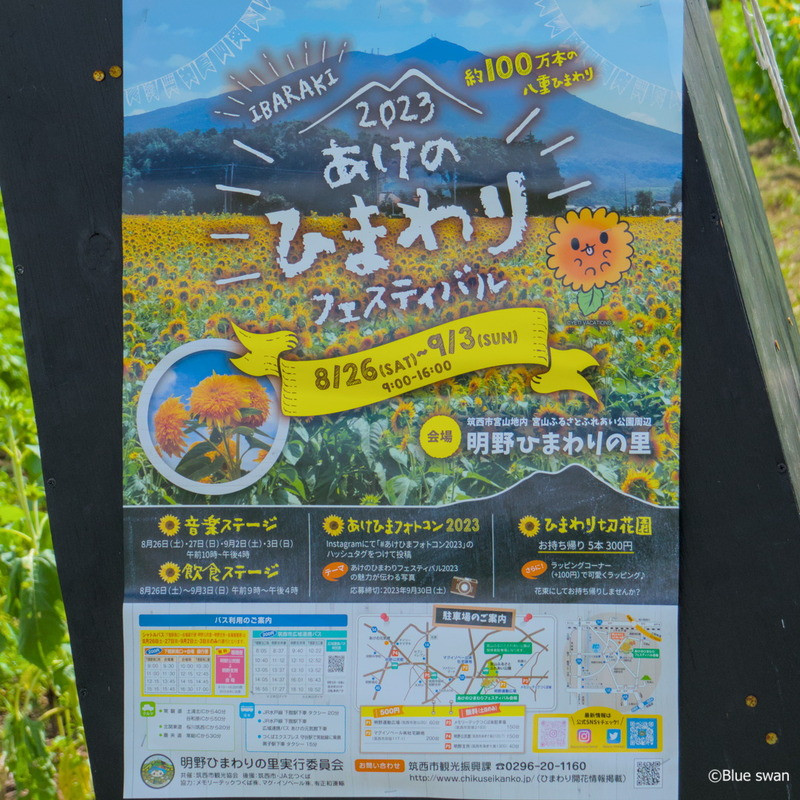
③ There is also a poster on the box.

④ I’m getting down to the path near the box.
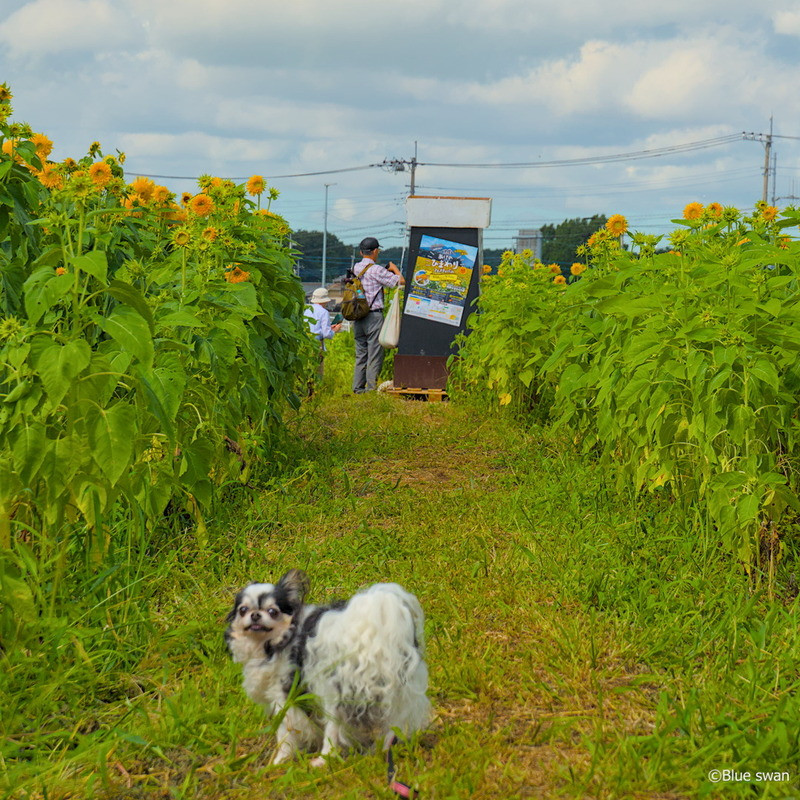
⑤ Next to the box, a photographer is taking pictures of sunflowers.
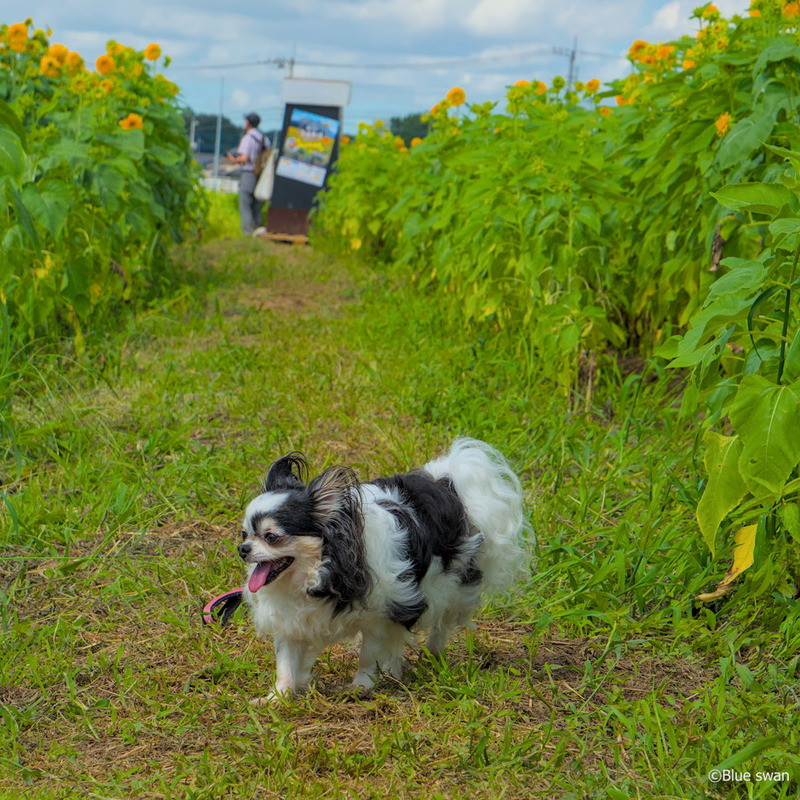
⑥ I’ve started running on the small path.
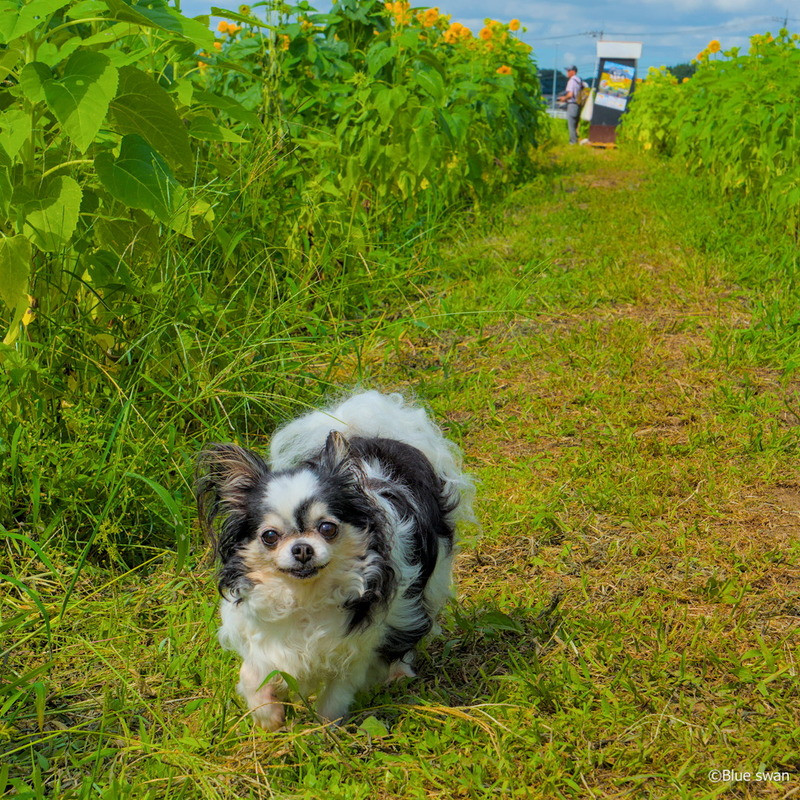
⑦ I liked the sunflower field. When I walked on my own feet, the sunflowers were above my head, and Dad couldn’t photograph me and the sunflowers together. So I asked Mom to hold me.
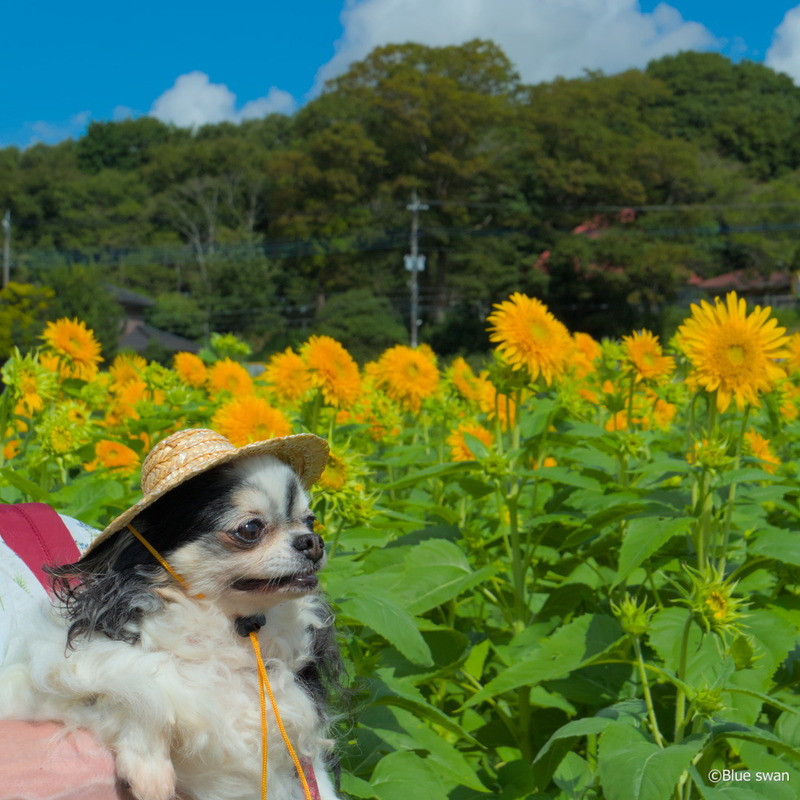
⑧ I’m looking at the sunflowers.
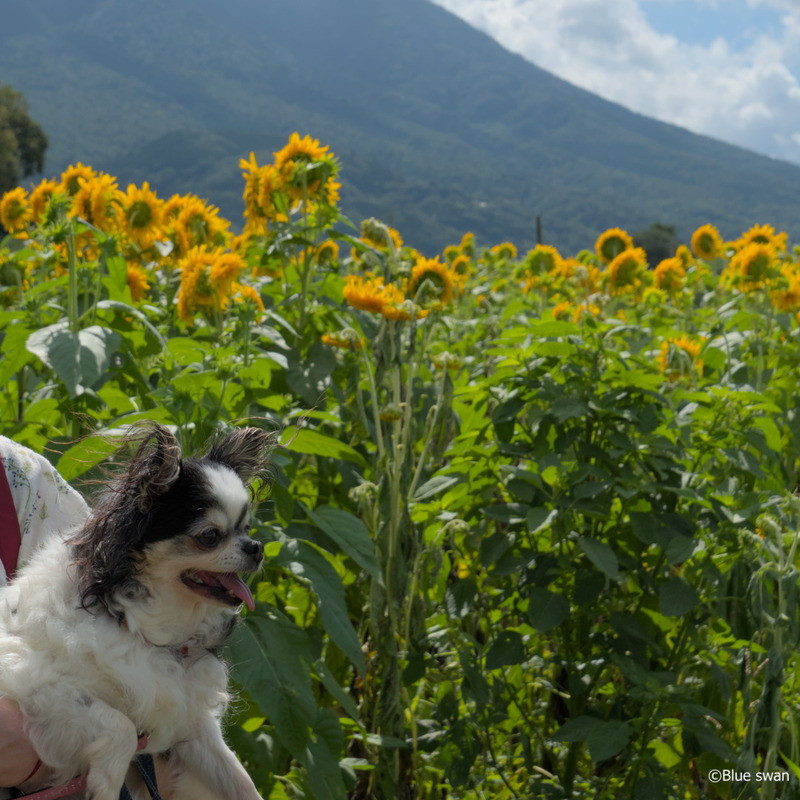
⑨ I’m looking at the sunflowers.
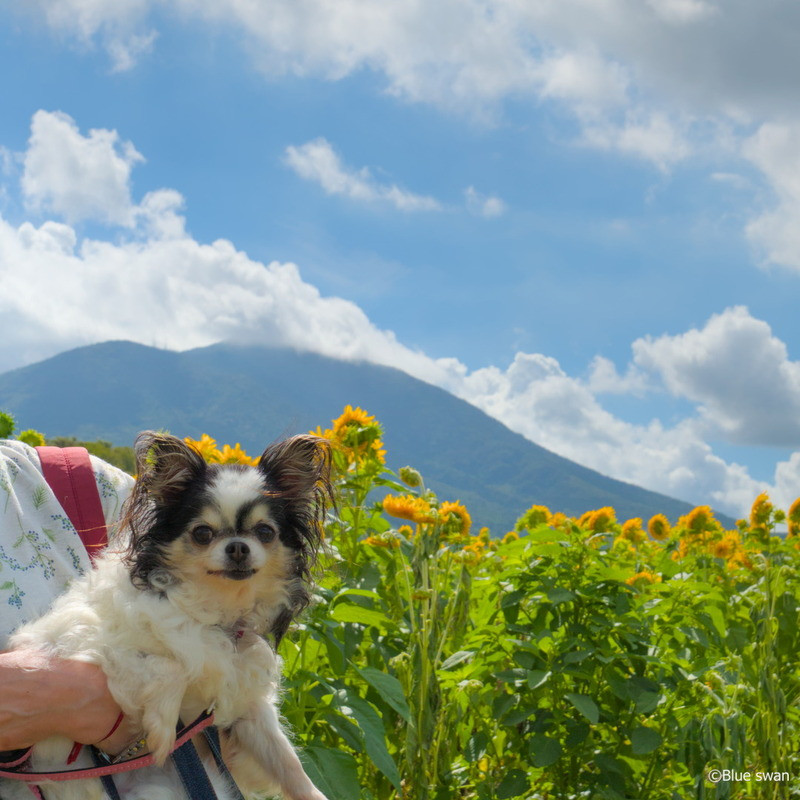
⑩ I’m looking at sunflowers with Mt. Tsukuba in the background.
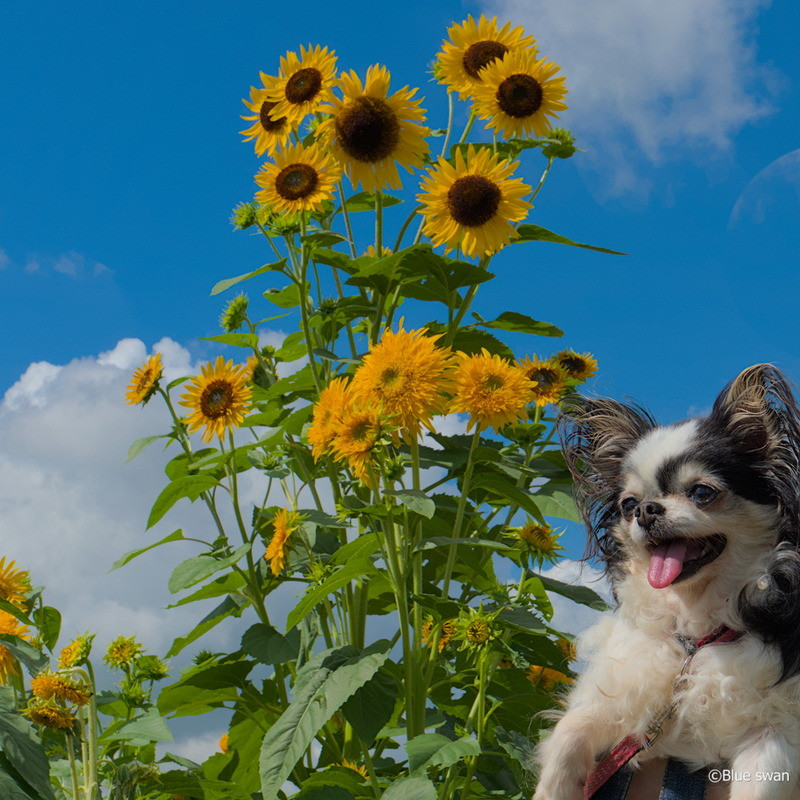
⑪ I can see two kinds of sunflowers. The taller ones are "Dairin sunflowers (大輪ひまわり)" and the shorter ones are "Tohoku Yae sunflowers (東北八重ひまわり)".
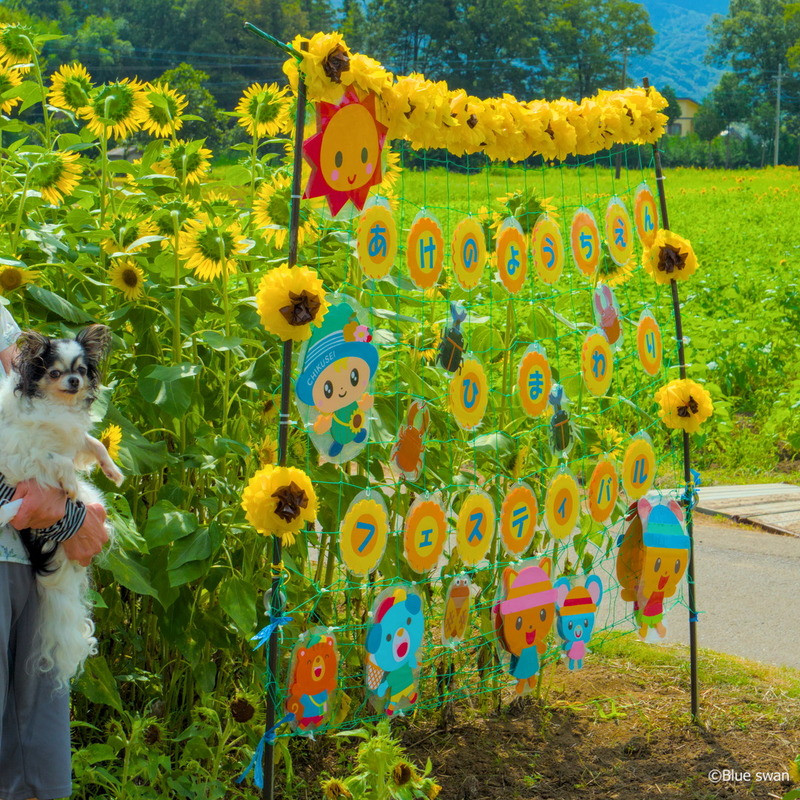
⑫ I am in front of the decorations made by the children at Akeno Kindergarten. You can also see "Chikkun".
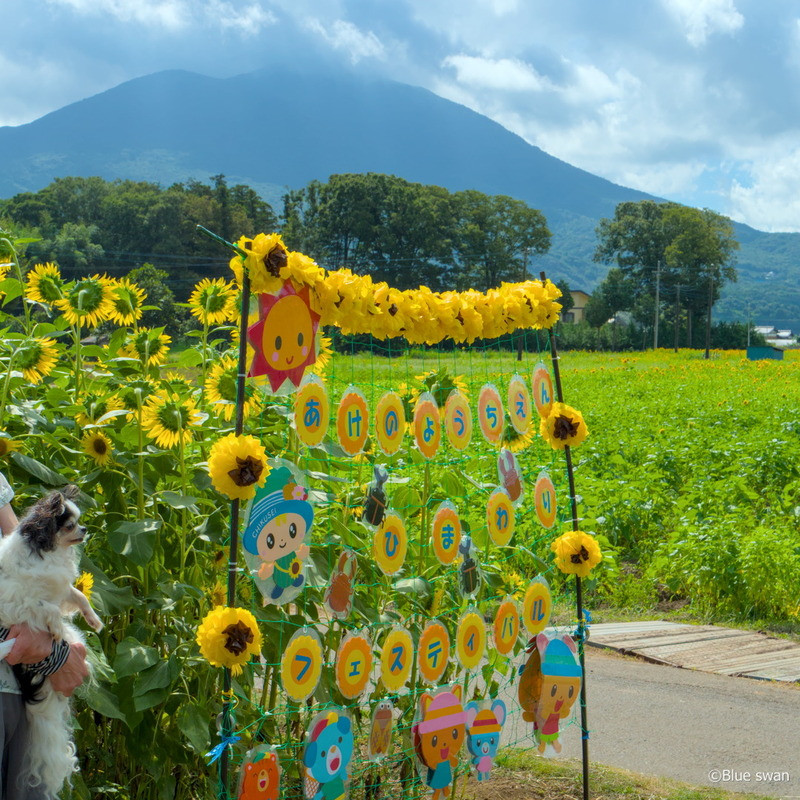
⑬ This is a photo with Mt. Tsukuba.
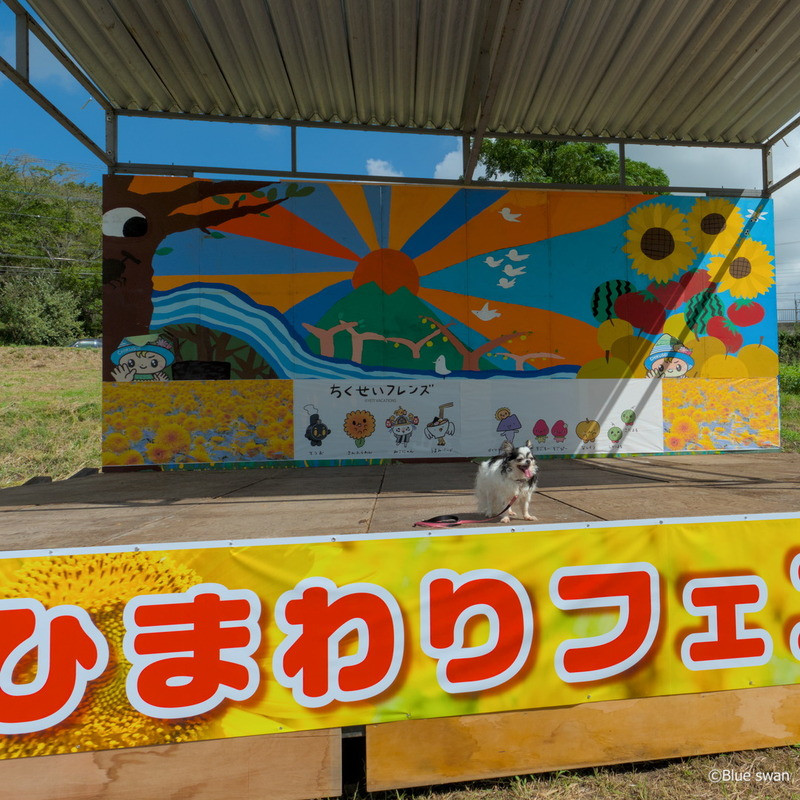
⑭ I’m on the stage of the Sunflower Festival.

⑮ You can see “Chikkun”.
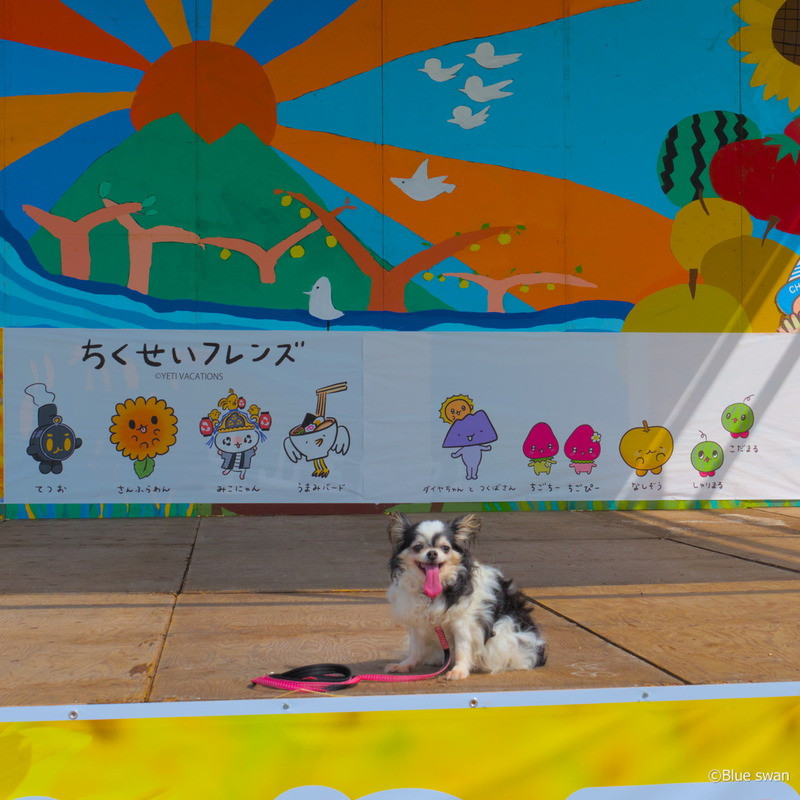
⑯ In the center of the stage, “Chikusei Friends” are lined up.
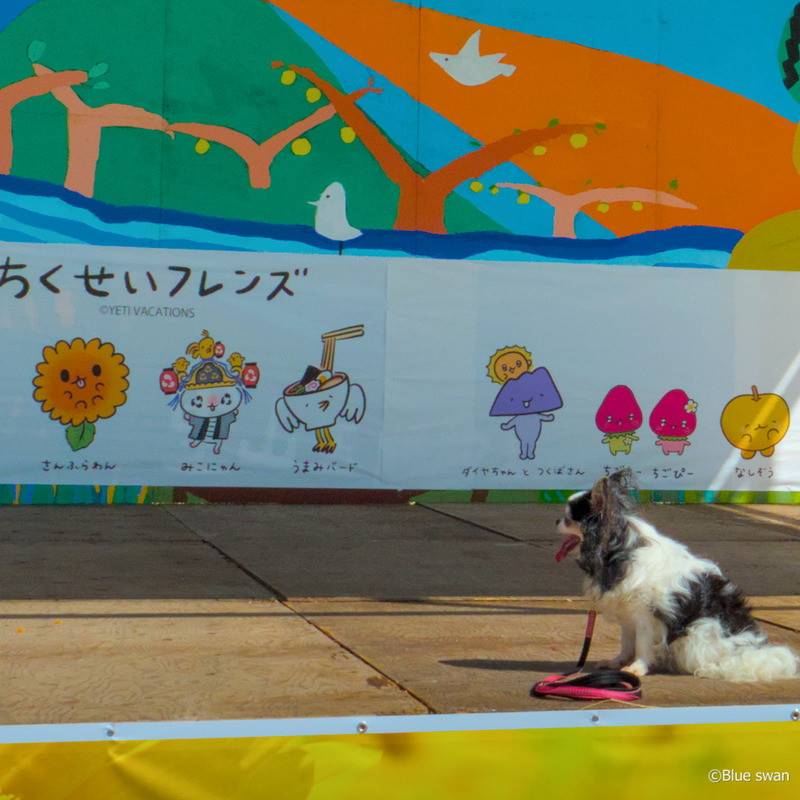
⑰ Let's dance the “Waltz of the Flowers” together.
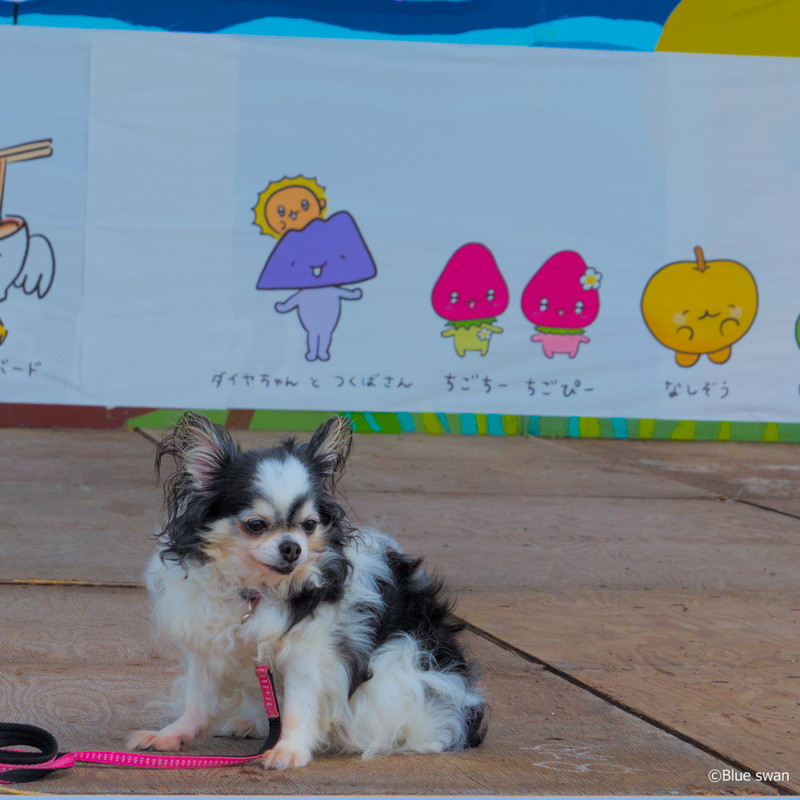
⑱ I’m taking a starting pose like a figure skater.
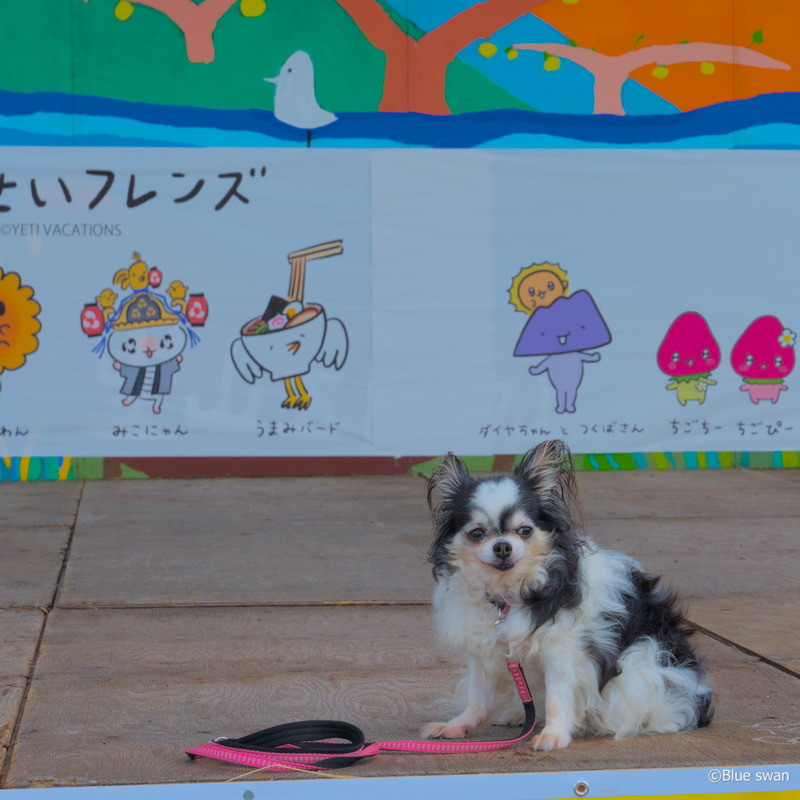
⑲ The music has started.
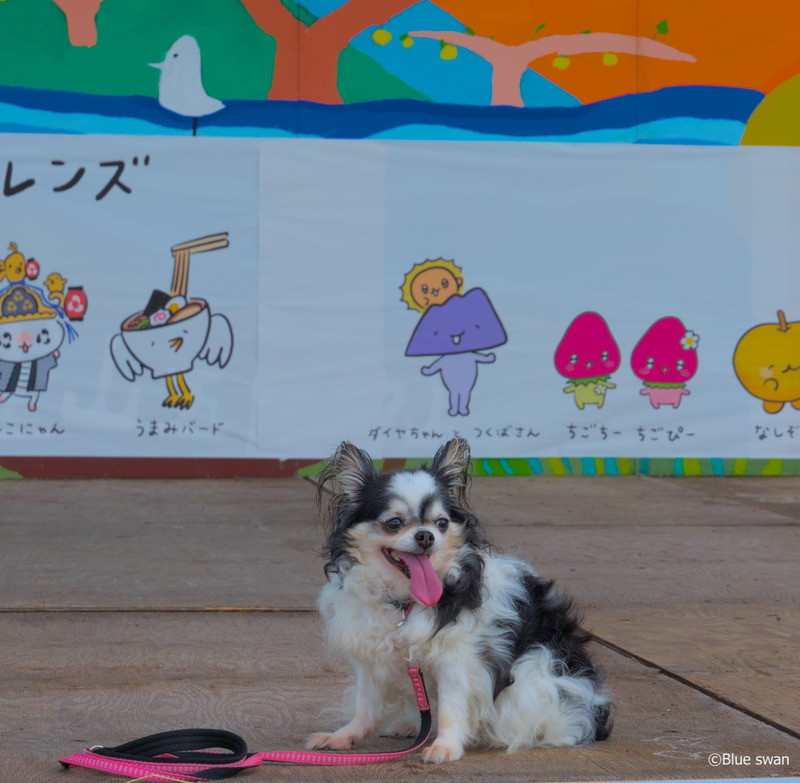
⑳ I’ve started dancing the "Waltz of the Flowers".
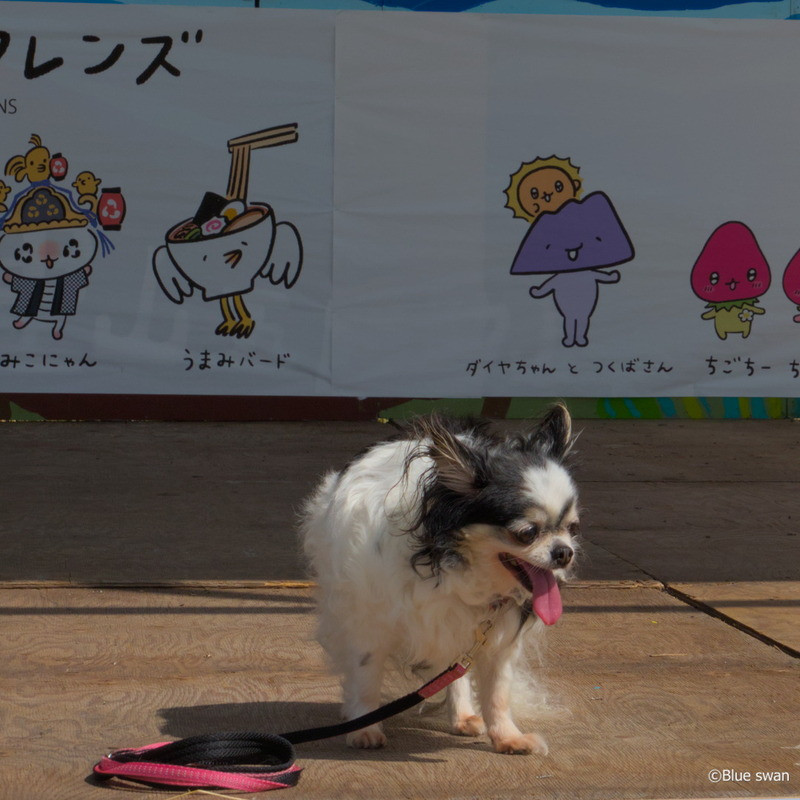
㉑ Oh, I feel a little dizzy.
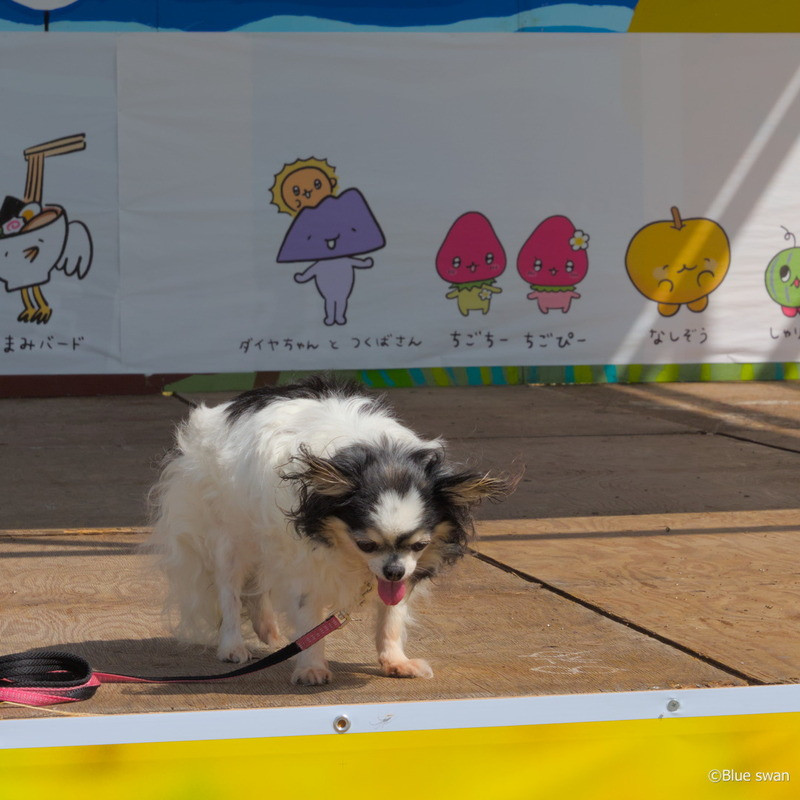
㉒ I’m afraid I'm going to get heat stroke.
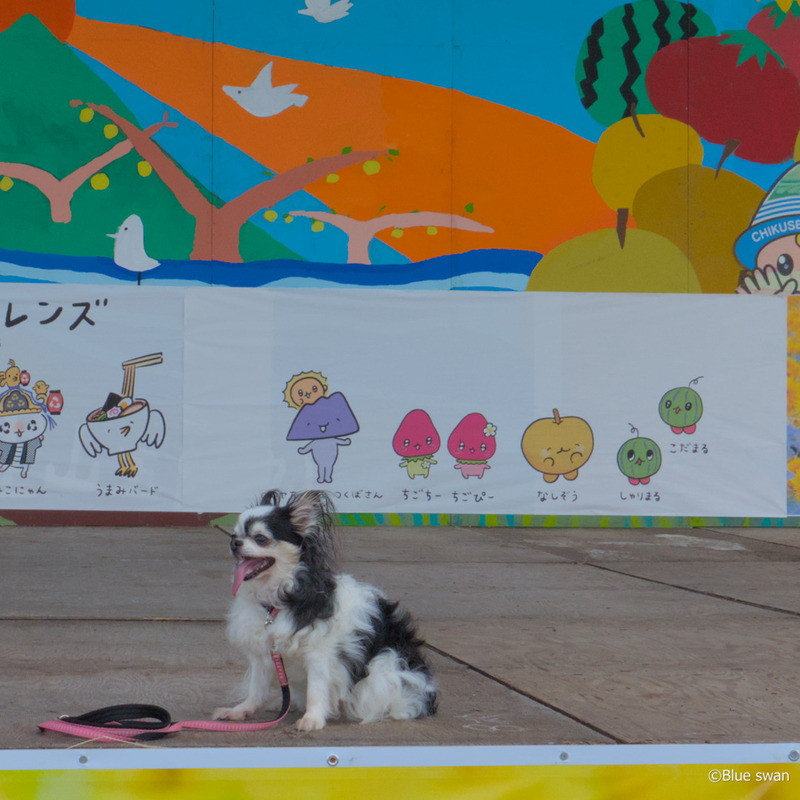
㉓ I feel like I'm going to fall from heat stroke.
My long tongue is stretching under my nose. This looks like a "nose waltz (Hana no waltz in Japanese)" instead of a "flower waltz (Hana no walts in Japanese)".
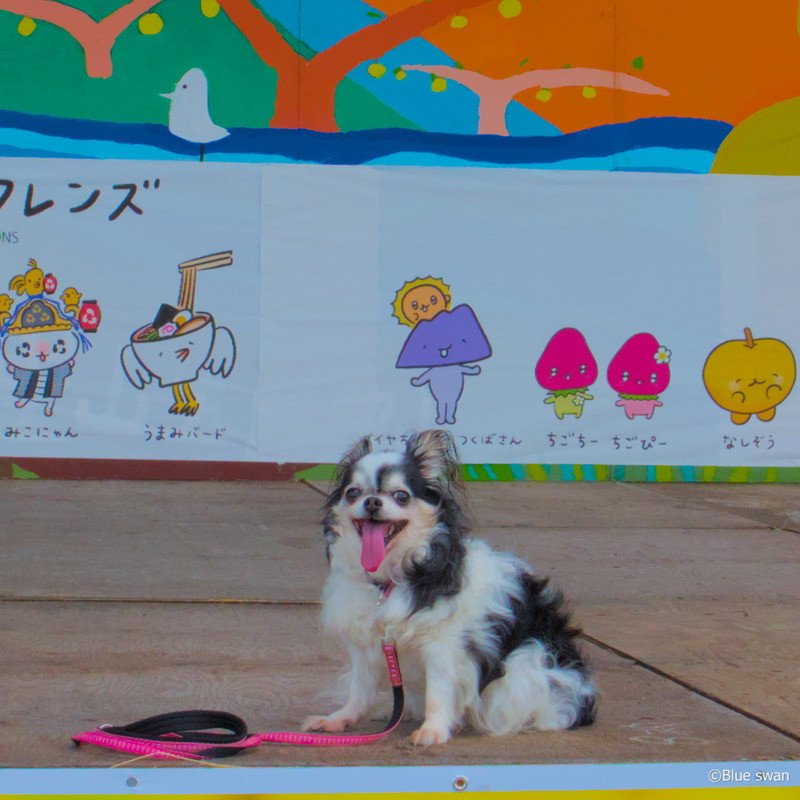
㉔ Today's performance is suspended due to my heat stroke.
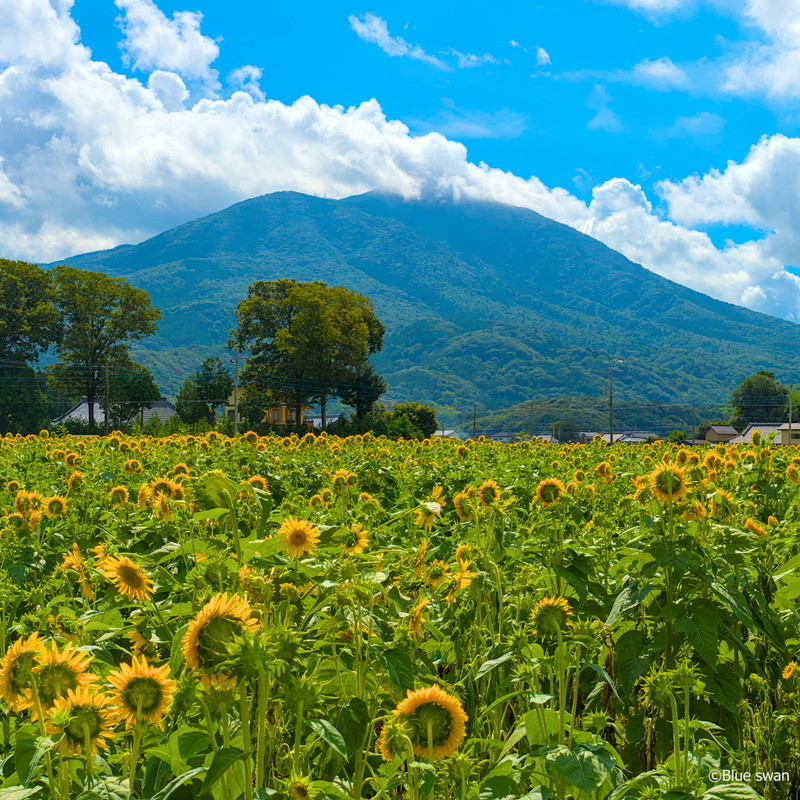
㉕ I'm going home after saying goodbye to the sunflower field. The inside of the car is very cool and comfortable.
In 2005, Akeno-machi merged with Shimodate City, Sekijo-machi, and Kyowa-machi to form Chikusei City (筑西市). "Akeno" is the old town name.
In 1990, the Takatsu district was used to cultivate a single field of "large sunflowers." Since 1993, Yae Himawari (whose official name is Tohoku Yae Himawari, Helianthus annuus cv. tohoku yae) have been cultivated here.
They are filled with narrow petals in the center and lack the central brown part. For this reason, seeds cannot be harvested from the central brown part. The seeding method is a trade secret. In 2002, the venue moved to the Miyayama area.
The Akeno Sunflower Festival is held in late August, later than other sunflower festivals. This is because the fields that have finished harvesting wheat from the middle to the end of June are borrowed from landowners and sown with sunflower seeds.
A stage is set up at the edge of the sunflower field. I’ll tell you about the mascot character of Chikusei City that you can see in the back of this stage.
"Chikkun", the mascot of Chikusei City, wears a hat which represents Mt. Tsukuba and Chikusei City. His hat has Chikusei’s products, a "pear" and a "strawberry", and Chikusei's flower "cosmos". Chikkun's body is made of a small watermelon, (which is also a local product), and he wears a sunflower pochette.
There are several friends of Chikusei:
1 "Diamond" and "Tsukuba-san" (Diamond Tsukuba),
2 "Chigochi" and "Chigopi" (strawberries)
3 "Nashibo” (a pear)
4 "Sharimaru" and "Kodamaru" (small watermelons)
5 “Tetsuo” (steam locomotive)
6 “Sunfurawan” (sunflower)
7 “Miko Nyan” (Mikoshi or portable shrine),
8 “Umami Bird” (Shimodate Ramen)
These “Chikusei Friends” were made by the creator, Yabai-chan, who is widely known for her 4-panel manga "Oshushidaya" and has a “world view of not trying hard (脱力系の世界観)”.

①This is the venue for the Sunflower Festival in the morning. You can see the stage on the left and the road to the sunflower field on the right. At the end of the road, you can see a box.

② This is the box-shaped thing seen in the picture ①.

③ There is also a poster on the box.

④ I’m getting down to the path near the box.

⑤ Next to the box, a photographer is taking pictures of sunflowers.

⑥ I’ve started running on the small path.

⑦ I liked the sunflower field. When I walked on my own feet, the sunflowers were above my head, and Dad couldn’t photograph me and the sunflowers together. So I asked Mom to hold me.

⑧ I’m looking at the sunflowers.

⑨ I’m looking at the sunflowers.

⑩ I’m looking at sunflowers with Mt. Tsukuba in the background.

⑪ I can see two kinds of sunflowers. The taller ones are "Dairin sunflowers (大輪ひまわり)" and the shorter ones are "Tohoku Yae sunflowers (東北八重ひまわり)".

⑫ I am in front of the decorations made by the children at Akeno Kindergarten. You can also see "Chikkun".

⑬ This is a photo with Mt. Tsukuba.

⑭ I’m on the stage of the Sunflower Festival.

⑮ You can see “Chikkun”.

⑯ In the center of the stage, “Chikusei Friends” are lined up.

⑰ Let's dance the “Waltz of the Flowers” together.

⑱ I’m taking a starting pose like a figure skater.

⑲ The music has started.

⑳ I’ve started dancing the "Waltz of the Flowers".

㉑ Oh, I feel a little dizzy.

㉒ I’m afraid I'm going to get heat stroke.

㉓ I feel like I'm going to fall from heat stroke.
My long tongue is stretching under my nose. This looks like a "nose waltz (Hana no waltz in Japanese)" instead of a "flower waltz (Hana no walts in Japanese)".

㉔ Today's performance is suspended due to my heat stroke.

㉕ I'm going home after saying goodbye to the sunflower field. The inside of the car is very cool and comfortable.
